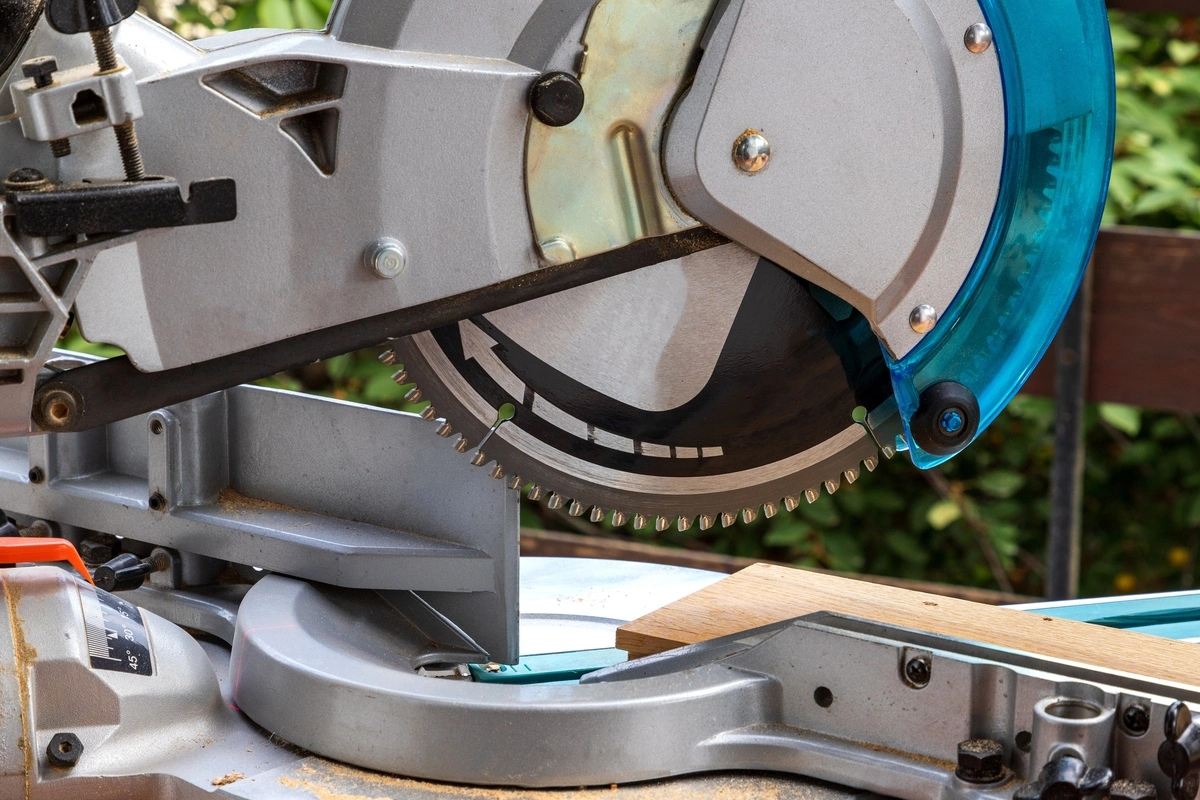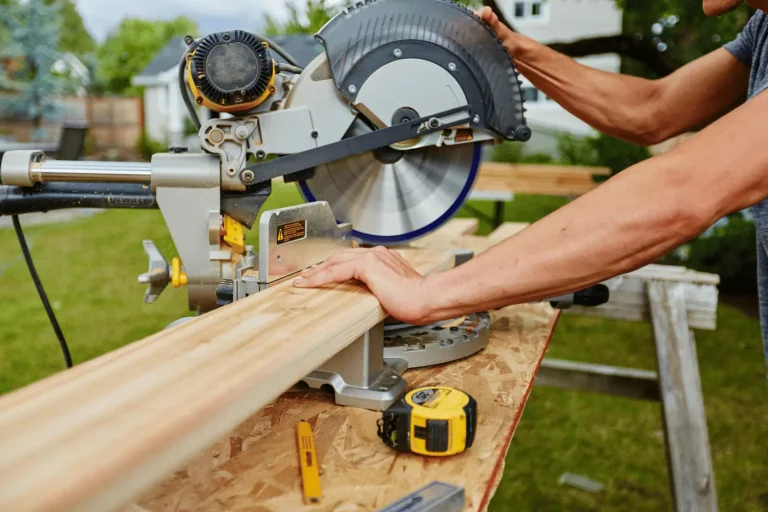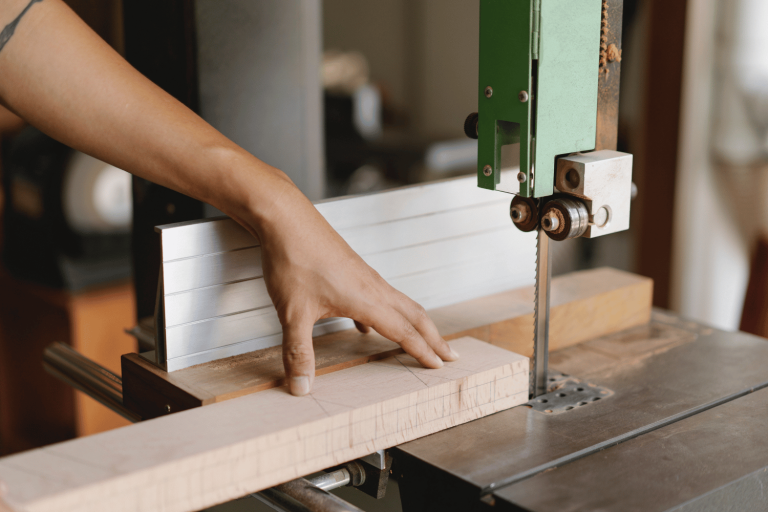10 Inch vs 12 Inch Miter Saw: Make the Right Choice
Are you looking to add a miter saw to your toolbox but can’t decide between a 10-inch or 12-inch model? This is a common dilemma faced by both novice DIYers and seasoned woodworkers alike. Understanding the key differences between these two popular miter saw sizes will make your buying decision much easier. In this article, we’ll compare the pros and cons of each saw so you can pick the best match for your needs and projects.
Choosing the Right Size: 10-inch vs 12-inch Miter Saw
Pros and Cons of a 10-Inch Miter Saw
The 10-inch miter saw strikes an ideal balance of portability and cutting capability for light-duty work. Here are its main advantages and limitations:
Pros:
- Lightweight and Portable: Weighing just 35-45 lbs, the 10-inch saw is easy to transport between job sites. The compact size is perfect for small workshops.
- Smooth Precise Cuts: A faster blade speed enables smooth, splinter-free cuts ideal for finish work.
- Budget Friendly: The 10-inch saw is gentler on the wallet when purchasing the saw and replacement blades.
Cons:
- Limited Cutting Capacity: A 10-inch saw blade restricts the thickness and width of material that can be cut. Wider boards may require multiple passes.
- Less Power: The smaller motor lacks the torque for heavy-duty cutting. Thick dense material is a challenge.
Pros and Cons of a 12-Inch Miter Saw
With tremendous cutting power, the 12-inch miter saw is built to take on demanding woodworking tasks. But the extra capability comes with some downsides.
Pros:
- Maximized Cutting Capacity: The 12-inch blade can cut much wider boards and thicker stock in a single pass.
- Raw Strength: A 15 amp motor delivers unmatched power to rip through hardwoods with ease.
- Stability: The additional weight enhances stability when cutting large workpieces.
Cons:
- Not as Portable: Weighing around 60 lbs, the 12-inch saw is cumbersome to transport between locations.
- Lower Blade Speed: While torque is high, the max RPM is lower, reducing cut precision.
- Significant Investment: You pay more up front for purchase price and accessories like specialty blades.
Comparing 10-inch and 12-inch Miter Saws
Comparing Cutting Capacity
The 10-inch miter saw excels at detailed trim carpentry where finesse is key. The smaller blade allows for smooth, precise cuts through thinner moldings and boards. However, the 10-inch saw is limited in the thickness of material it can cut in a single pass.
In comparison, the 12-inch miter saw is a powerhouse designed to slice through thick stock with ease. The larger blade can rip through wider planks and dense hardwoods that would be challenging for a 10-inch saw. If working with substantial lumber is your goal, the 12-inch model has the brawn to handle it.
Contrasting Power and Speed
When it comes to power versus speed, each saw size has its advantages. The 10-inch saw achieves a very high blade RPM, enabling swift, uninterrupted cuts. But the smaller motor lacks torque for brute force cutting applications.
The 12-inch miter saw takes the opposite approach, sacrificing maximum speed for tremendous cutting power. The RPM is lower, but the 15 amp motor drives the blade through dense material with remarkable strength.
Comparing Precision and Portability
The lighter 10-inch miter saw has superb portability and greater precision. Minimal blade deflection and vibration allow for accurate cuts and smooth finishing. This lightweight saw is easy to transport and fits in tight workspaces.
Meanwhile, the bulkier 12-inch model offers outstanding stability for cutting large workpieces, but sacrifices on portability. Given its substantial mass, blade deflection can also reduce cut precision. The 12-inch saw excels for heavy rough work rather than fine detail.
Evaluating Affordability
When it comes to purchase price and ongoing costs, the 10-inch miter saw is the more economical pick. Replacement blades are readily available at lower prices. The 12-inch saw requires a higher upfront investment and its specialized blades come at a premium. For cost-conscious buyers, the 10-inch saw provides better value.
Advantages and Disadvantages: Safety and Versatility
When it comes to safety considerations, the lighter 10-inch miter saw is less intimidating for novice users to handle. Quick brake systems also allow the 10-inch blade to stop faster when needed. However, the 12-inch saw’s additional mass enhances stability for controlling heavy stock. This larger saw requires strict use of protective gear given the power involved.
In terms of versatility, the 10-inch saw can handle both fine finish work and general crosscutting tasks. Its compact size does limit cutting capacity for thick material. On the other hand, the 12-inch miter saw specializes in powering through substantial stock while crossing wide boards. But all that muscle makes it overkill for delicate trim work.
The choice comes down to matching the tool to the task. For smaller scale projects, the 10-inch saw provides ample versatility in a safer, easy to control package. Professionals working with thick lumber will benefit most from the 12-inch saw’s focused power and wider capacity, though safety precautions are a must. Select the right saw for your needs and always follow proper safety protocols.
Knowing When to Choose a 10-Inch Miter Saw
The 10-inch miter saw shines for detailed finish work where precision cuts are key. Here are the best applications for this portable saw:
- Trim Carpentry – The 10-inch blade excels at moldings, frames and other intricate cuts requiring finesse.
- Compact Workspaces – The saw’s small footprint fits perfectly in tight work areas with limited room.
- Frequent Job Site Changes – Weighing only 30-40 lbs, the 10-inch saw is easy to transport from place to place.
When a 12-Inch Miter Saw is the Right Call
With unmatched power and capacity, the 12-inch miter saw takes on the toughest cutting challenges. Here are the top uses for this heavyweight performer:
- Thick Lumber – The larger 12-inch blade slices through dense hardwoods over 6 inches thick with ease.
- Large Scale Projects – Framing walls, building decks and other major construction jobs are no sweat for this saw.
- Permanent Shop Setup – While heavy at 50-60 lbs, the 12-inch saw finds its forever home as a fixed workshop workhorse.
Matching the Saw to Your Work
Choosing which miter saw is right for you depends on three key factors:
Project Type – For finish work, the 10-inch saw provides surgical precision. The 12-inch tackles heavy-duty building tasks.
Workspace – Those with limited space should favor the 10-inch saw’s compact footprint. The 12-inch model thrives with room to operate.
Budget – The 10-inch saw offers better value for money upfront and over time. The 12-inch is a powerhouse investment for serious work.
Keep these considerations in mind, and selecting the proper miter saw for your needs will be a cut above the rest!
FAQs on Miter Saw Sizes
Which is better: a 10-inch or 12-inch miter saw?
Ah, the classic debate. It’s like asking if a pickup truck is better than a sports car – it all depends on what you need it for!
- 10-inch Miter Saw: This is your go-to for most general woodworking projects. It’s lighter, more portable, and the blades are usually cheaper. Perfect for trim work, molding, and casual DIY projects.
- 12-inch Miter Saw: Now, this is the big kahuna – more power, larger cutting capacity, and great for heavy-duty tasks. If you’re planning to slice through thick lumber or tackle large-scale projects, this might be your MVP.
How big of a board will a 10-inch miter saw cut?
A 10-inch miter saw typically handles boards up to 6 inches in width when making a straight cut. It’s like being able to comfortably carry a six-pack of soda – sufficient for most, but you might need a bigger cooler for larger gatherings. For angled cuts, this size reduces slightly, so keep that in mind for those complex projects.
Can a 10-inch miter saw cut a 4×4?
This is where it gets a bit tricky. Technically, a 10-inch miter saw can cut through a 4×4, but it might not be in a single pass. Imagine trying to eat a giant burger – you can’t always take it down in one bite. You might need to cut, flip, and then cut again. If you find yourself regularly wrestling with 4x4s, consider sizing up to a 12-inch.
What size of miter saw is best?
The “best” size really depends on your specific needs.
- For Beginners and Casual DIYers: A 10-inch miter saw is often the best starting point. It’s like the first bike you get with training wheels – easy to handle and perfect for learning.
- For Regular or Heavy-Duty Projects: If you’re frequently tackling larger or more demanding projects, a 12-inch saw might be more your speed. It’s the power tool equivalent of upgrading to a professional chef’s knife.
Final Thoughts
Choosing between a 10-inch and a 12-inch miter saw boils down to your specific needs, project types, and personal preference. The 10-inch saw is a fantastic all-rounder, ideal for beginners and those working on smaller, more detailed projects. It’s the practical, everyday tool in your DIY arsenal. On the other hand, the 12-inch saw is your heavy-duty champion, perfect for larger projects and thicker materials, providing that extra power when needed. Think of your miter saw choice like picking shoes for an occasion – you wouldn’t wear flip-flops to a marathon or hiking boots to the beach. Pick the one that best suits your woodworking journey, and you’re sure to have a tool that not only gets the job done but also brings joy to your DIY endeavors.







